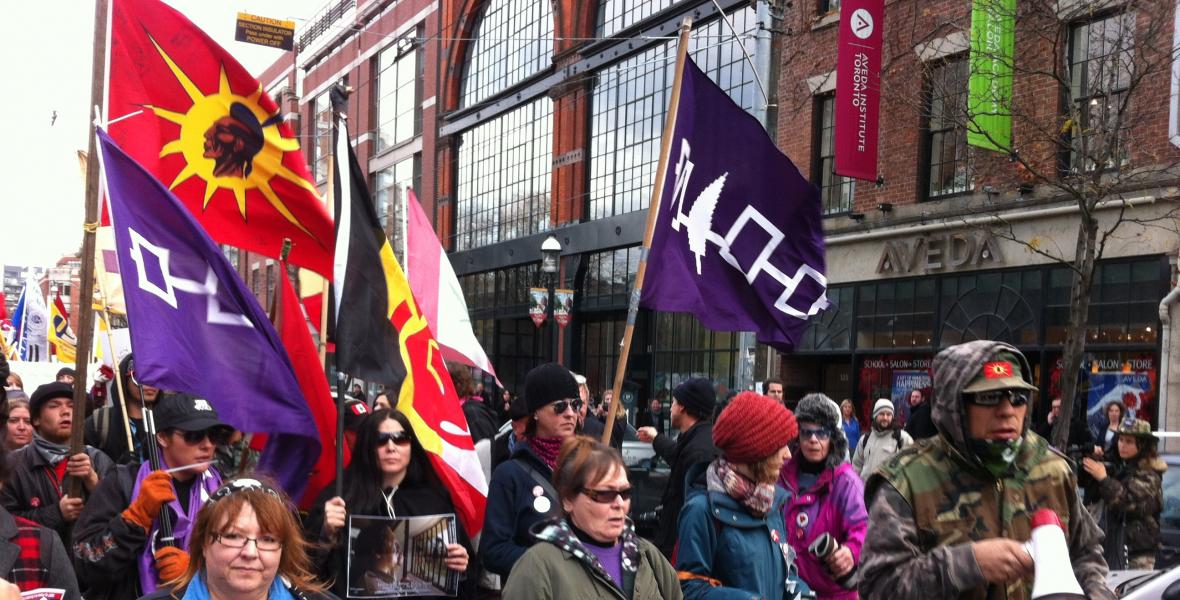Part one of a three part series.
I believe that Indigenous community members should be able to light a Sacred Fire on Crown land for ceremonial purposes without having to go through the paperwork to get a permit or, at the very least, not pay a fee.
This isn’t about laziness or lack of concern about fire safety. In the case of a traumatic, sudden death, such as suicide, or major tragedies communities might face, there may not be time to go through all the paperwork with a head clouded with grief.
It is not as simple as taking the fire indoors to burn inside a church when your church is all around you. Public parks are some of the few places urbanites can find trees and open spaces.
What I don’t believe is fair is a city like Toronto making money off of an Indigenous spiritual practice. Whether to mark someone’s passing through the western door or seeking the fire’s support to stop the suicide crisis is imperative.
Right now, even if you can book in advance far enough to know you’re going to need a ceremonial fire, for twenty-six people or more (either people stay the whole time or they come and go during the four-day funerary fire) the cost is $86.57. Having a fire outside of a designated fire pit is the same cost. On top of that is the cost of insurance, which for twenty-six to one hundred people tacks on an additional $54.
The regulated fire pits at places like Dufferin Grove Park are very hard to access because of the long waiting list. In an emergency, such as a suicide crisis in a community, people are not thinking about the costs until afterward.
To provide one example, the issue of ceremonial fires came up during the Occupy protests in 2011. Jacqueline Homan has commented on this issue. In regards to Occupy Toronto, which was hosted in St. James Park, she notes that,
“The columnist Joe Warmington made inferences to Ipperwash and Caledonia in his October 26 article in the Toronto Sun, and implied that Aboriginals get too many special privileges at the expense of other Canadians — like having an open fire in a public park without a permit, which not only costs a lot of money but is also a real bureaucratic hassle to get. This has raised a lot of resentment from non-Aboriginals who often take out their frustrations on Aboriginal people, escalating racial tensions between communities where the Aboriginal community usually gets the worst of it.”
And I know some people really upset at what is labelled “special treatment.” If you really want or need to have a Sacred Fire, too, then I suggest lighting one on the property of your foreign embassy or on Crown land. Because there are some people in Indigenous communities, the same ones who refuse to vote in the federal election, who consider the relationship between them and the Canadian government as a nation-to-nation diplomatic relationship.
Action for action’s sake
The reason behind lighting Sacred Fires then, were very different, and they were often confused with warming fires. And as with anything regarding Occupy, communication through the General Assemblies (GAs) or communicating to the mass media, was chaotic at the best of times.
This is where some of the communication difficulties surfaced. There were issues with the Sacred Fire right from the moment it was suggested, but everything we did at that camp was a provocation since we should have never been allowed to pound our tent pegs down in the first place. The police were pretty bitter at the fact that they were out-maneuvered. People were considered weapons of dissent for not disbursing the minute the order was given. Tents were considered weapons of dissent. The presence of the Protest Chaplains was considered a weapon of dissent.
Armed with Weapons of Dissent
I know it sounds ugly, but I had to bring it up. Because of the growing tension within the Occupy Toronto camp, and life outside the park, I knew that we had to be guarded to protect First Nation ceremonial fires from falling into the same category in the eyes of the reactionary media, and any ceremony in general, was seen as a weapon of dissent. It’s funny how there was little to no reaction in the media at the time regarding a Christian group who came by to sing hymns or the Friday night Shabbat services.
Jaggi Singh once said, “there is a difference between paranoia and vigilance.” I knew we had to be vigilant. One of our biggest concerns at first was actually the mainstream media. Even with huge banners that asked journalists not photograph the Sacred Fire or any singing or ceremony that was occurring in a tiny section of the larger Occupy Toronto layout.
Photo: Krystalline Kraus
Like this article? Please chip in to keep stories like these coming.




